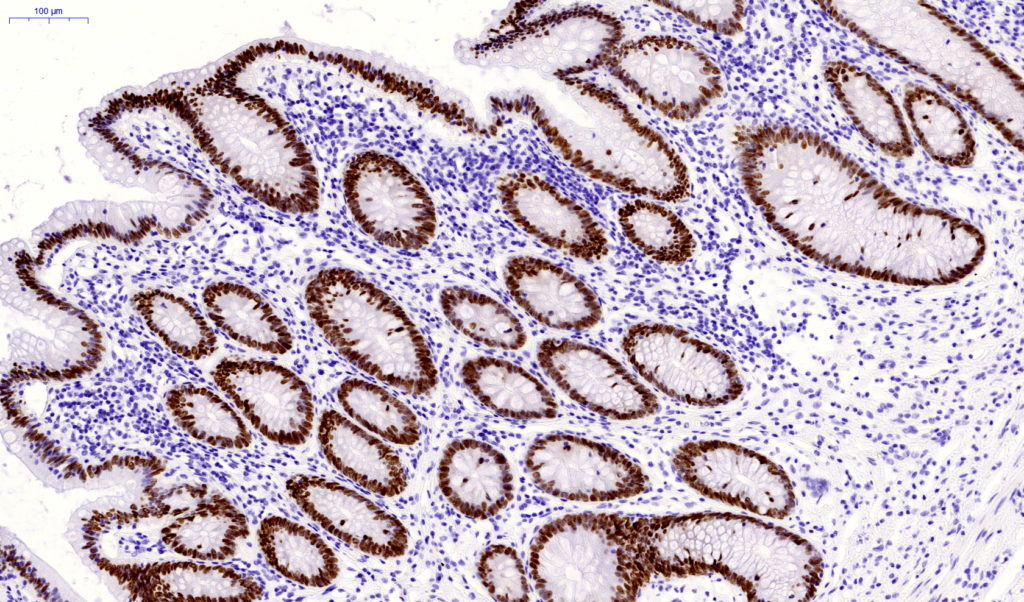Rabbit MonoPoly Antibody
The specificity of this monoclonal antibody to its intended target was validated by HuProtTM Array, containing more than 19.000 full-length human proteins. The intestine-specific transcription factors CDX1 and CDX2 are important for directing intestinal development, differentiation, proliferation and maintenance of the intestinal phenotype. CDX2 protein expression has been seen in GI carcinomas. Anti-CDX2 has been useful to establish GI origin of metastatic adenocarcinoma and carcinoids and is especially useful in distinguish metastatic colorectal adenocarcinoma from lung adenocarcinoma. However, mucinous carcinomas of the ovary also expressed CDX2 protein. It limits the usefulness of this marker in the distinction of metastatic colorectal adenocarcinoma from mucinous of the ovary.
Availability:
| Catalog No. | Contents | Volume |
| ILM6271-C01 | CDX-2 | 0,1 ml concentrate |
| ILM6271-C05 | CDX-2 | 0,5 ml concentrate |
| ILM6271-C1 | CDX-2 | 1,0 ml concentrate |
Intended use: For Research Use Only
Reactivity: Human, others not known
Clone: MonoPoly/6271R
Human Gene ID: 1045
Human SwissProt: Q99626
Human Unigene: 174249
Species of origin: Rabbit
Isotype: IgG, Kappa
Immunogen: Recombinant fragment and/of synthetic peptides of human CDX2 protein
Control Tissue: Colon carcinoma
Staining: nuclear
Presentation: Bioreactor Concentrate with 0.05% Azide
Application and suggested dilutions:
Pre-treatment: Heat induced epitope retrieval in 10 mM Citrate buffer pH6.0 for 20 minutes is required for IHC staining on formalin-fixed, paraffin embedded tissue sections.
Immunohistochemical staining of formalin-fixed, paraffin embedded tissue section (dilution up to 1:100)
The optimal dilution for a specific application should be determined by the investigator.
Note: Dilution of the antibody in 10% normal goat serum followed by a Goat anti-Rabbit secondary antibody-based detection is recommended.
Storage & Stability: Store at 2-8 °C. Do not use after expiration date printed on the vial.
Reference:
- Mallo, G.V., et al. 1998, Expression of the CDX1 and CDX2 homeotic genes leasds to reduced malignancy in colon cancer-derived cells. J. biol. Chem. 273: (14030-14036)
- Silberg, D.G., et al. 2000. CDX1 and CDX2 expresiion during intestinal development. Gastroent. 119:961 971

